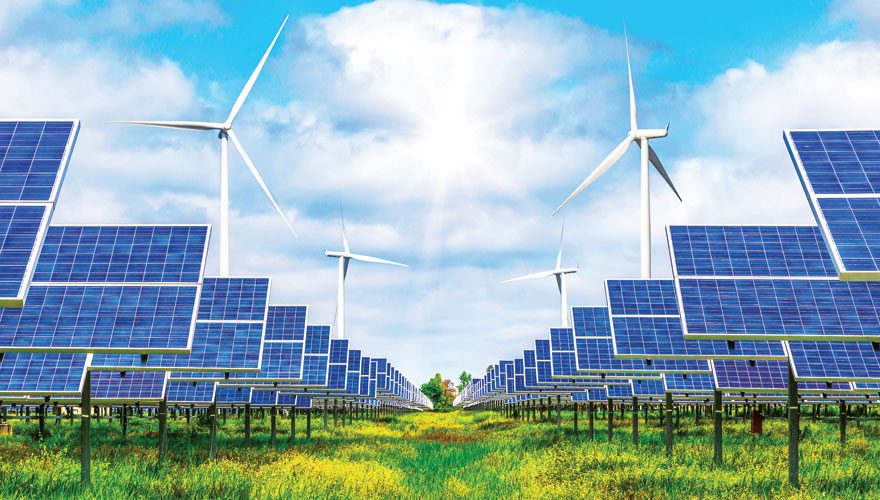Several solar parks due online from 2020 to 2022 plus private sector companies invited for joint ventures’
For the latest Cambodian Business news, visit Khmer Times Business
Cambodia’s renewable energy will reach above 400 megawatts in the next a couple of years, bringing solar power up to 20 percent of the national grid, according to an official from the Ministry of Mines and Energy (MoME).
Victor Jona, spokesperson and director general of the energy department for MoME says that starting from next year the energy generated from solar plants will increase between 15 to 18 percent year-on-year.
He adds that Cambodia will provide 20 percent of its solar energy to the national grid by 2021, making it the top country among Southeast Asian nations to have green energy on the national grid.
Further boost to sector
“The solar power we have now is 90 megawatts (MW), including 10MW in Bavet, Svay Rieng province which went online in 2017, and another new solar plant in Kamong Speu, which will increase its capacity to 80MW by next month,” says Jona.
He adds that Cambodia’s energy output is due to increase by 400 megawatts, with several solar parks scheduled to come online between 2020 and 2022.
In a further boost to the sector, the government just released a report saying that there is more than 900 million dollars of investment opportunity in solar power to the private sector.
Cambodia mostly generates energy from coal-fired power plants and hydropower dams.
Solar energy made up less than 1 percent of total energy output in 2018. However, the country’s energy mixture will change drastically in upcoming years.
Goal is to diversify
The government says that the goal is to diversify energy production, now largely dominated by hydroelectricity, which accounted for about 50 percent of all power consumed last year.
hrough this diversification strategy, the government hopes to put an end to the power shortages that have affected the country.
According to a recent study by the Asian Development Bank (ADB), Cambodia has about 10,000MW of hydropower potential, 8,100 MW for solar and about 6,500MW for wind.
After power cuts began in March across the country this year, the government approved several energy investments – a hydropower dam in Pursat province and several solar farms across the country – and increased energy imports from neighbouring countries.
Energy shortages
On July 12, Prime Minister Hun Sen, during a cabinet meeting, approved another four additional solar projects with a total capacity of 140MW. Among them were a 30MW solar farm in Pursat province, 60MW in Battambang province, 30MW in Banteay Meanchey province and 20MW in Bavet, Svay Rieng province.
The development of additional solar farms could address electricity shortages, reduce the amount of petroleum used in power generators, create jobs for people and provide tax revenue to the government – an estimated of $1.86 million annually on average for more than 20 years.
Energy from Laos
Studies have indicated that Cambodia’s electricity demand may rise from 1,537MW in 2018 to 2,307 MW in 2020 and 2,858MW in 2021. In the first semester of 2019, Cambodia received an additional 5MW from Vietnam and 60MW from Thailand.
According to the Cabinet meeting in July this year, Pay Siphan, spokesman of the government of Cambodia, said that the 60MW solar power plant in Kampong Speu province went online in August 2019.
He adds that Cambodia will also receive 195MW from Laos in November 2019; and it plans to launch a CEL2’s 150MW coal-fired power plant in Sihanoukville in November 2019 and in December, Cambodia will receive an additional 70MW from Thailand.
Pay added that Cambodia will also get another 100MW from Laos in March 2020 and the 20MW solar farm in Kompong Speu.
Moreover, in April 2020, Cambodia will operate a 400MW coal-fired power plant in Phnom Penh, while there is the 60MW coal plant in Kampong Chnnang province that was adopted by the Council of Minister’s meeting on April 5.
Pay says that by 2021, Cambodia will put into operation a 60MW solar power plant in Pursat province adopted at the Council of Minister’ meeting on April 5.
Great potential
Jayant Menon, lead economist at ADB, says that the development of solar energy carries great potential for Cambodia.
Given current high electricity costs, solar has the potential to provide an alternative source, especially in remote regions that are not connected to the grid, he adds.
“It can avoid high connectivity costs associated with linking to the grid and therefore reduce the overall cost of the provision of electricity and power,” Menon adds.
“This is another example of “late-comer advantage” that allows Cambodia to adopt new technologies to leapfrog and avoid investment in unnecessary infrastructure, such as connecting to existing power grids, and instead using localised solar parks to provide the energy needs of poor and rural regions,” says Menon.
Cost-competitive
Nick Beresford, Resident Representative of the United Nations Development Programme (UNDP) in Cambodia, says that installing new solar plants are now cost-competitive with conventional fossil fuel generation.
He says that solar is a form of clean energy that does not emit any CO2 or other pollutants that contribute to climate change.
Installing a solar plant is much quicker than other options (for example, Cambodia’s first solar plant in Bavet took just under one year).
He adds that power demand in Cambodia has sustained an average annual growth rate of nearly 20 percent over the last decade.
This growth in demand is from a prolonged economic expansion, with gross domestic product growth levels around 7 percent per year and a booming construction sector.
Extending national grid
Installing new power generation capacities will be a challenge for any country experiencing growth in demand at this pace.
Cambodia has done remarkably well in this regard, while extending the national grid and improving the quality of power delivered, Beresford argues.
Integrating solar energy has been given its own priority under the Royal Government of Cambodia’s Rectangular Strategy-IV, which was followed by the approval of several new utility scale solar projects in the country.
In recent years, solar energy has been building on this momentum for greater policy support in Cambodia.
“Given its unique characteristics, the adaptation of solar power should occur at an appropriate pace that does not conflict with current power supply,” adds Beresford.
“Some of the leading solar nations, such as Germany, Thailand and China, have extensive experience with integrating solar power to their national grids.”
Beresford adds that UNDP Cambodia provides support by connecting lessons learned from international experiences with the local Cambodian context to support Cambodia in developing appropriate policies to stimulate the growth of solar power in Cambodia.
Increasing access
“Expanding solar generation is aligned with the country’s goal of increasing access to affordable and reliable sources of electricity,” said ADB Principal Climate Change Specialist Pradeep Tharakan.
“ADB, as a trusted development partner of the government, is working toward the long-term development of the energy sector in the country.”
Recently, the auction for 60MW of solar photovoltaic (PV) capacity in Kampong Chnange conducted by Electricite du Cambodge (EDC), Cambodia’s national electricity utility, has led to the lowest bid of 3.877 US cents per kilowatt/hour by Prime Road Alternative Co Ltd.
Power purchase deals
The project, supported by the ADB, drew 26 bidders, including several global companies, and has achieved the lowest power purchase tariff for a solar project so far recorded in Southeast Asia.
The 60MW project is part of a 100MW National Solar Park and is structured as a public–private partnership. The EDC is providing the land and transmission access, while the private sector will provide power generation capacity based on a long-term power purchase agreement with the EDC.
The ADB served as the transaction adviser for the project, through the Office of Public–Private Partnerships, while also providing a sovereign loan blended with climate finance funds to pay for the transmission line and substation for the solar park.
The project preparation work was carried out by the ADB with the support of the governments of Canada and Singapore.
The investment on the ADB’s solar power project is different from other investment, says Jona, the spokesperson of the Mines and Energy Ministry.
Cost of land
He adds that under previous investment, the private sector was responsible for buying the land and then installing solar panels.
However, ADB’s solar project involved buying the land for the EDC, thus, the company has not included the cost of land in the investment.
“This model for the bidding between EDC and multi-organisations such as the ADB has given impetus to solar power, so the government has built the sub-station and reserved the land to cut the cost of investment,” he adds.
Keo Rattanak, managing director of EDC, says that the demand for the peak hour will be less than 100MW in the year 2000.
However, 19 years later, the energy consumption will reach 2,000MW, a 20-fold increase, he adds.
“Until 2019, among the total number of villages across the country, 93 percent can connect and have the electricity to use, particularly from the national grid.
It is the combination for other sources of energy that the government generate to supply to the people,” Keo adds.
“Among 93 percent of the total villages we have connected about 73 percent up to 2019,” he points out.
. “However, in 2000 less than 10 percent of residents had electrical connections.
“From 10 percent to 73 percent electrification is a high rate.” he points out.
World Bank report
The World Bank’s latest report says Cambodia has the fastest electrification rate, protecting it from from insecurity and instability.
Keo adds that 50 percent of energy come from hydropower dams, 30 percent from coal power plants, less than 5 percent from foreign diesel, and the rest is imported and made up of solar power..
Moreover, by December 2020, the use of energy from solar farms connected to the national grid will reach 15 percent.
Japan, Korea and other Asean countries have yet to use solar power electricity from their national grids.




